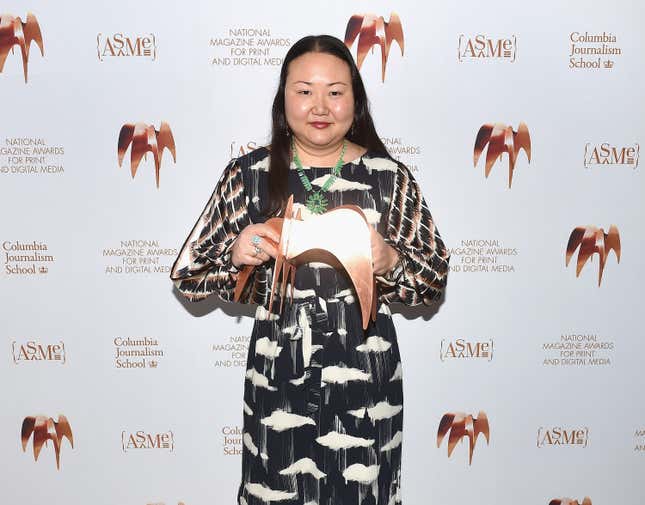Hanya Yanagihara Is Eccentric and Self-Indulgent. So What?
Perhaps it’s time to embrace our most unhinged habits in the service of art.
BooksEntertainment

Hanya Yanagihara, beloved and be-hated author of A Little Life and editor of T, the New York Times’ style supplement, was profiled by the New Yorker this past weekend on the eve of the release of her new novel.
To Paradise has already received more than its fair share of both love and hate in the press. And Yanagihara’s recent New Yorker profile, much like that incendiary Jeremy Strong profile, highlights Yanagihara’s eccentric work habits and how they contribute to her stellar output.
We learned a lot of weird things about Yanagihara from this profile: She has one neighborhood restaurant, called Omen. She has a favorite table at Omen. She doesn’t have people over for dinner, because she hates crumbs. She refers to her apartment as her “pod,” which features oddities like “a Shōwa-era sculpture of a penis and testicles which, at first glance, looks like a camel.” She uses the penis-camel as a ring caddy. She is said to own over 10,000 books. She skipped a college orgy because she didn’t want to help with cleanup. She does not believe in marriage. She drew portraits of cadavers at age 10. Her bed is a “tester bed” from the 1810s, which she also slept on as a child. She told writer D.T. Max that “if there wasn’t something vulgar in a house the décor was a failure.”
Yanagihara’s work habits are similarly puzzling: She took 18 years to write her first novel, The People in the Trees, then famously wrote the approximately million-page long A Little Life in 18 months. She works her magazine job during the day, then writes for “long stretches” at night, without breaks. A Little Life has seven chapters composed of three sections, each subsection of which contains 18,000 words.
-

-

-

-

-

-

-

-

-

-

-

-

-

-

-

-

-

-

-

-

-

-

-

-

-

-

-

-

-

-

-

-

-

-

-

-

-

-

-

-








































